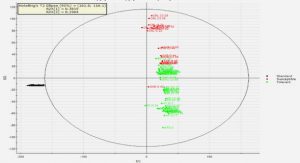Get Complete Project Material File(s) Now! »
Reduction in Work Hours
The traditional apprenticeship style of training is/was thought to require trainees to work long hours. Prior to New Zealand junior doctors going on strike in 1984, hospital boards actually paid junior doctors less wages per hour if they worked overtime. Thus there was a financial incentive on behalf of the health boards to under-staff the hospital and as a result the experience gained by junior doctors was significant. This strike introduced to New Zealand the concept that no doctor should work more than 144 hours in a two week timeframe. This model works well for those jobs which require the doctor to be on-site. As the doctors advance in their training, the requirement to be onsite diminishes, and the doctor can remain on-call, and need only attend the hospital to resolve more complex issues, or operate. The varied workload while on-call means that in order to make the roster ‘legal’ an excess number of registrars are required to be employed. This increase in doctors means that the experience gained within the operating theatre is diluted, and trainees are taking longer to complete a similar number of cases.
Validation of Simulators
This section describes how simulators can be assessed. The assessment of simulators is important if the community is to spend time and money on a simulator, especially as involvement with a simulator may change the culture of the training community. Flight simulators underwent little or no formal validation during their development. Indeed if there had been studies on the earliest simulators, the results would be interesting to review. However medical simulation exists in an era where there is a tendency to measure and critically analyse as much as possible. Validation of a simulator is important, however equally important is to identify whether the areas where a simulator might be found lacking are important clinically, or whether despite its failings it still has a valid purpose. In a similar manner if the only tool in the toolkit is a large adjustable wrench, nails can still adequately be driven into a plank of wood, until someone arrives with a hammer.
Criterion related validation
Similar to inter-observer reliability, this validation method tests whether a simulator scores a user similarly to another independent measure of the same skill. Within surgery this validation exercise is difficult to perform, as there are very few independent measures of skill. Usually a comparison with a standard bench type training exercise is used. This becomes more difficult as the simulation task becomes more complex. Work by Fried et al (Fried et al., 2004) showed that scores on a laparoscopic simulator were predictive of intra-operative performance.
Image Intensifier guided
There was a significant difference between the earlier and later qualifying surgeons with the strength to which they agreed with the statement that image intensifier guided procedures should be simulated, with the earlier qualifying surgeons again being keener on this task being simulated. This may reflect their experience of observing the introduction of the image intensifier into the theatre, but is probably more likely their greater experience at watching junior trainees struggle with understanding where they are in 3 dimensions.
Training Intensity vs. Frequency
Simulators can be used in one of two ways; either intensively or frequently. Intensive training is most effective in rapidly up-skilling a trainee in a particular area, however if the interval between the training exercise and the real operation is too great, then the benefits of the training may be lost, similarly to that found with aviation flight simulation, as discussed previously. Training performed frequently (having reached a satisfactory level of performance by training intensively) is obviously the most beneficial (Ross, 2006) but the logistics of providing this type of training need to be examined more closely. Currently most simulators are situated within surgical skills centres and as such are not accessible to trainees on a frequent basis, as they require personnel to run them and usually a mentor to guide the trainee, as well as running costs such as consumables.
CONTENTS :
- 1 INTRODUCTION
- 1.1 Publications Arising
- 1.2 Conference Presentations
- 1.3 Descriptions in the Media
- 2 BACKGROUND
- 2.1 Introduction
- 2.2 Simulators
- 2.2.1 History of Simulators
- 2.2.2 Turing Test
- 2.2.3 Cost
- 2.2.4 Types of simulators
- 2.2.5 Alternatives to Virtual Reality
- 2.2.6 Virtual reality simulators
- 2.3 Real world problem
- 2.3.1 Trainee selection
- 2.3.2 Virtual Reality Assessment of Technical Skill
- 2.3.3 Skill vs. Experience
- 2.3.4 Training within health system
- 2.3.5 Reduction in Work Hours
- 2.4 Validation of Simulators
- 2.4.1 Content related validation
- 2.4.2 Criterion related validation
- 2.4.3 Construct related validation
- 2.4.4 Transfer validation
- 2.5 Choice of programming language/interface
- 2.5.1 Use of external prototypes
- 2.5.2 VRML browsers
- 2.5.3 Communication with web browser
- 2.5.4 Inbuilt navigation
- 2.6 Examples of simulators currently available
- 2.7 Summary
- 3 ATTITUDES TO SIMULATION
- 3.1 Introduction
- 3.2 Methods
- 3.2.1 Development of survey:
- 3.2.2 Survey administration:
- 3.2.3 Statistical Analysis:
- 3.3 Results
- 3.3.1 Sample demographics:
- 3.3.2 Overview of tasks and requirements for successful simulators:
- 3.3.3 Utilization in practice and as an accreditation tool:
- 3.4 Discussion
- 3.4.1 Introduction of New Technology
- 3.4.2 Safety culture
- 3.4.3 Changes in use of internet
- 3.4.4 Limitations of work hours
- 3.4.5 Role of simulators in training
- 4 DEVELOPMENT AND FACE VALIDITY
- 4.1 Introduction
- 4.2 Background
- 4.3 Development
- 4.3.1 Virtual Patients
- 4.3.2 VRML interface
- 4.3.3 Simulator Construction
- 4.3.4 The Procedure of DHS fixation
- 4.3.5 Score-sheet
- 4.4 Face Validity
- 4.4.1 Results:
- 4.4.2 Discussion
- 4.5 Summary
- 5 CONSTRUCT VALIDITY
- 6 SLIPPED CAPITAL FEMORAL EPIPHYSIS
- 7 FUTURE WORK
- 8 CONCLUSION
GET THE COMPLETE PROJECT
VIRTUAL REALITY SIMULATION OF HIP SURGERY






